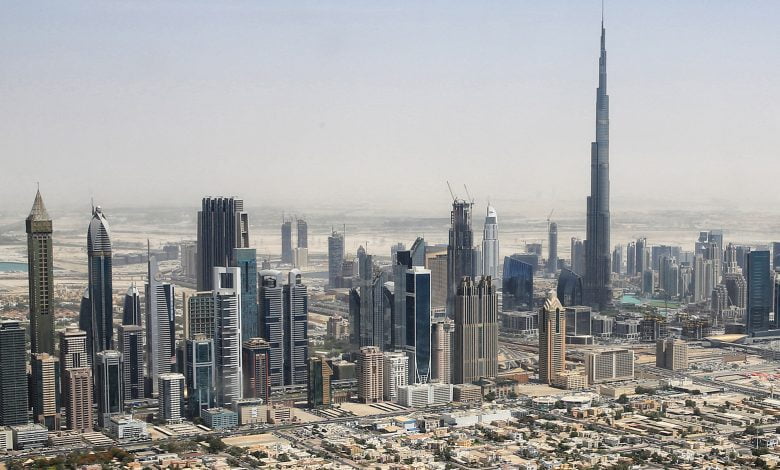A watchtower in Bur Dubai, c. 19th century

In 1841, a smallpox epidemic broke out in the Bur Dubai locality, forcing residents to relocate east to Deira.[30] In 1896, fire broke out in Dubai, a disastrous occurrence in a town where many family homes were still constructed from barasti – palm fronds. The conflagration consumed half the houses of Bur Dubai, while the district of Deira was said to have been totally destroyed. The following year, more fires broke out. A female slave was caught in the act of starting one such blaze and was subsequently put to death.[31]
A watchtower in Bur Dubai, c. 19th century
In 1901, Maktoum bin Hasher Al Maktoum established Dubai as a free port with no taxation on imports or exports and also gave merchants parcels of land and guarantees of protection and tolerance. These policies saw a movement of merchants not only directly from Lingeh,[32] but also those who had settled in Ras Al Khaimah and Sharjah (which had historical links with Lingeh through the A
l Qawasim tribe) to Dubai. An indicator of the growing importance of the port of Dubai can be gained from the movements of the steamer of the Bombay and Persia Steam Navigation Company, which from 1899 to 1901 paid five visits annually to Dubai. In 1902 the company’s vessels made 21 visits to Dubai and from 1904 on,[33] the steamers called fortnightly – in 1906, trading seventy thousand tonnes of cargo.[34] The frequency of these vessels only helped to accelerate Dubai’s role as an emerging port and trading hub of preference. Lorimer notes the transfer from Lingeh ‘bids fair to become complete and permanent’,[32] and also that the town had by 1906 supplanted Lingeh as the chief entrepôt of the Trucial States.[35]
